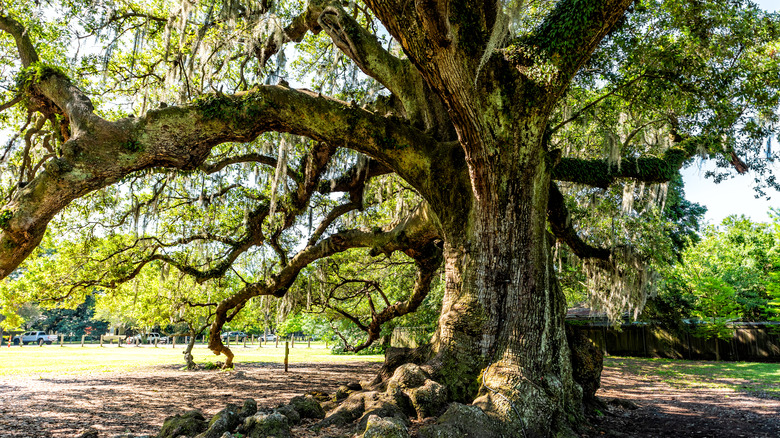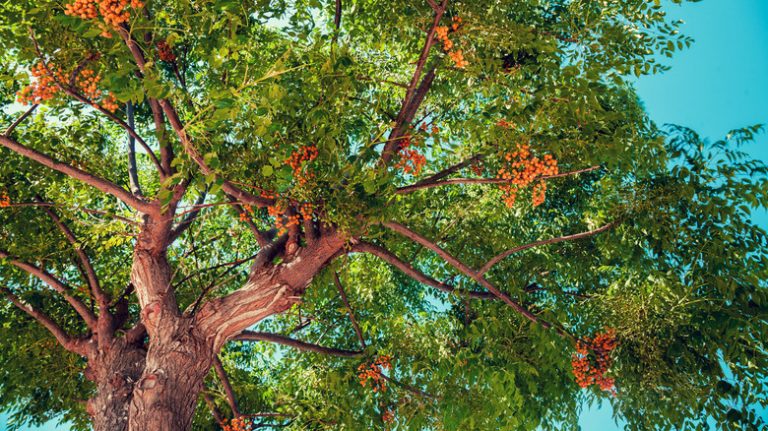Garden Trees, Shrubs & Vines
Jenny Lynch
Deep in the heart of the Chisos Mountains, as reported by the Good News Network, botanical researchers had chanced upon a living Quercus tardifolia, or lateleaf oak tree, a species that was thought to have gone extinct when we lost the last known tree back in 2024 (per The Morton Arboretum). For over a decade, no one in the know had laid eyes on another Quercus tardifolia until now, thanks to an alliance of botanists from The Morton Arboretum, the United States Botanic Garden, and eight other organizations.
The newly discovered tree is not in the best condition due to a fungal infection and burns marks from a recent wildfire. This has prodded the National Parks Service into action alongside conservationists to save the individual tree from further environmental damage. Perhaps more importantly, they also plan to collect acorns from the tree in order to propagate new plants and hopefully bring the entire species back to life. Time is of the essence since they are unlikely to get another chance in the future. If damage to the tree is such that it’s not producing any acorns, they’ll incorporate a different method like grafting.
The importance of saving the tree

CrackerClips Stock Media/Shutterstock
With majestic canopies that can sprawl wider than 150 feet, oak trees have been beautifying Earth for 65 million years, and we humans have given them an apropos nickname: the cathedrals of the natural world (via One Earth). They often crossbreed amongst themselves so they can adapt to and overcome detrimental conditions within their environment. Much like botanical hybridization done by humans in the greenhouse or lab, it’s their way of choosing the best characteristics from each other in order to stay alive and thriving.
As per Good News Network, saving Big Bend National Park’s lone lateleaf oak involves genetically testing it to find out if it has remained the same since the tardifolia variety was first identified or if it has changed (or adapted) enough over the years that it now needs to be classified as its own species. Either way, scientists need to figure out how each species survives so they can help other vulnerable varieties stave off the threat of extinction. Then, in the best of circumstances, beneficial environmental designs will be passed down to future generations, allowing them to live longer while better tolerating threats like drought and wildfires.
The most amazing oak trees in the world

Kristi Blokhin/Shutterstock
Quercus tardifolia is just one of a few incredibly rare and impressive oak trees that can be found worldwide. Some are considered to be among the largest and others the longest living. Even the most common oak trees tend to have extensive lifespans, so an oak has to have 700 years before botanists will think it’s old. Imagine living for seven centuries before anyone considered you an elder!
Currently, the oldest oak tree in the world is thought to be the 2,000-year-old Quercus agrifolia called the Great Oak, per One Earth, which is located in Temecula, California, on land owned by the indigenous Pechanga people. Called Wi’áaşal in the language of the tribe, it stands 100 feet tall with a trunk that is more than 20 feet around (via Pechanga Band of Indians). But that doesn’t make it the biggest.
One of the largest ever recorded is the Seven Sisters Oak in Lewisburg, Louisiana, per Country Roads. With a canopy spread of 139 feet and a massive trunk circumference of over 40 feet, this tree has been appropriately dubbed magnificent by the Live Oak Society; however, scientists aren’t sure if it’s 500 years old or perhaps more like 1,200 years. A funny note about the Live Oak Society is that they induct trees to hold the president’s office. So after being admitted as a society member, the Seven Sisters Oak quickly moved up the ranks to become a highly-acclaimed president.



